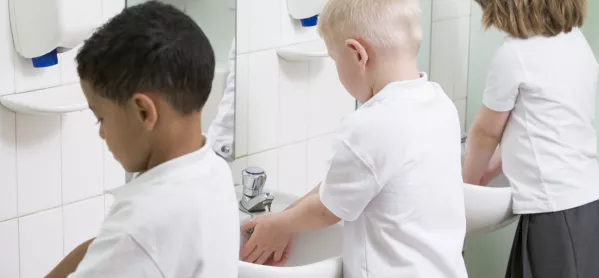- Home
- Plans for full-time school - 17 things we learned
Plans for full-time school - 17 things we learned

Today first minister Nicola Sturgeon announced that from Tuesday 11 August Scottish schools will get back up and running, with all pupils expected back full time one week later, on 18 August, “at the latest”.
As Ms Sturgeon made her statement to the Scottish Parliament, new guidance was published on preparing for the start of the new school term.
Here are some of key aspects from both:
- Pupils will start to return to school from Tuesday 11 August; some authorities might opt for a “soft start”, but the expectation is all pupils should be back full time by 18 August “at the latest”, said Ms Sturgeon.
- There will be a total investment of £75m to enable the recruitment of around 1,400 extra teachers and a further £30m - on top of £20m already announced for things such as transport and cleaning - will be available to councils as part of a £50m education recovery fund.
- Adults in schools do not need to wear face coverings as long as they can maintain two-metre distancing, but anyone wishing to wear a face covering can and the guidance acknowledges more people may choose to as they become “more commonplace in Scotland”.
- There will be social distancing between staff, and between staff and pupils, but in primary there will be no distancing between children, and in secondary distancing should be maintained “where possible” but only “provided this does not compromise the return to full-time schooling”, as Ms Sturgeon put it.
- School staff and pupils will receive priority testing under test and protect.
- There will be an enhanced coronavirus surveillance programme for schools - although Ms Sturgeon admitted “aspects” of this programme will not be in place in time for the return to school. When up and running this will take place in “a sample of schools” and the “principal focus...at least initially” will be senior pupils and staff (S4, S5, and S6).
- An additional surveillance study will look at risk in different occupational groups, including the education workforce. Together these two programmes are expected to provide information on things such as incidence and swab positivity for school-age children; number and proportion of cases among school workers; hot spots; and outbreaks in schools. However, the Greens pointed out even footballers are being tested as regularly as four times a week. They said they were worried the mistakes made in social care where “it took a long time to roll out routine, regular testing” were going to be repeated.
- Staff and pupils to wash hands or use hand sanitiser when entering or leaving the building; before/after eating; and after using the toilet.
- Commonly touched objects - desks, handles, computers, dining tables - should be cleaned at least twice a day.
- Library books should be quarantined for 72 hours upon return to the school library.
- Schools should consider staggering breaks, lunch and pick up and drop off (but not if it impacts on time for learning).
Today First Minister @NicolaSturgeon confirmed that Scotland’s schools will re-open full-time from 11 August, with enhanced public health measures in place and additional funding provided to support a safe return.
- Scottish Government (@scotgov) July 30, 2020
Read more ➡️ https://t.co/fzSBtcmTlJ pic.twitter.com/F1f5HKCgKb
- Initially, theatre performance; music (wind and brass) and singing should be “avoided” as guidance on how these activities can be managed safely is “still being developed”. When it comes to PE and sport, schools are referred to the general guidance on children and sport which states “indoor sport facilities must remain closed”.
- Schools are asked to encourage young people “not to crowd together or touch their peers”; to seat young people “side by side and facing forwards”; and to “use all the available space in classrooms, halls, libraries or social spaces” - but they are also reminded that “distancing is an additional, precautionary step” which goes beyond current scientific advice.
- Windows should be kept open “to increase natural ventilation” - and doors should be wedged open for the same reason and to reduce the touching of handles (but not fire doors). Guidance adds “this advice will be reviewed as we head into the winter months”.
- Schools should consider keeping pupils in lower secondary in the same groupings and senior pupils in consistent groups as much as possible - it is suggested that “timetabling in double periods (or more)” could help reduce contact.
- All staff can operate across different classes and year groups “where this is necessary in order to facilitate the delivery of the school timetable”, says the guidance - but “they should try and keep two-metre distancing from learners and other staff as much as they can”.
- No student teachers will be placed in schools before the October 2020 school break and contingency plans will be developed to allow student teachers to undertake some of their teaching practice through the use of remote learning, should opportunities for direct classroom experience not be available from mid-October 2020.
Keep reading for just £1 per month
You've reached your limit of free articles this month. Subscribe for £1 per month for three months and get:
- Unlimited access to all Tes magazine content
- Exclusive subscriber-only stories
- Award-winning email newsletters



